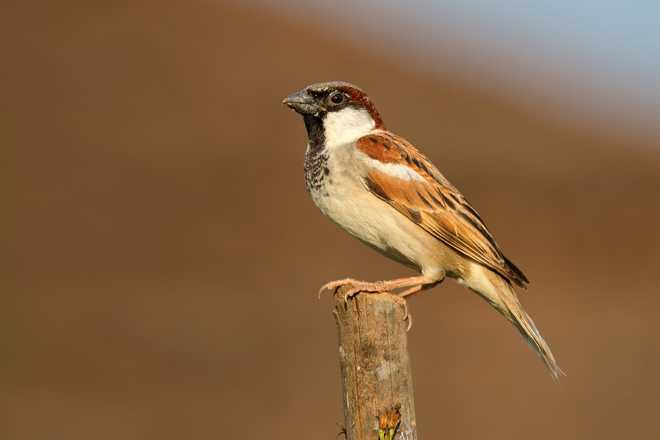
The number of house sparrows has stabilised nationwide, although there is still a marked decline in their population in cities, the report said.
Gandhinagar, February 18
A report on Indian birds has claimed that over 50 per cent of the 867 species studied exhibit a population decline in the long term, while 146 are at great risk in the short term.
The study - ‘State of India’s Birds 2020’ - states raptors, migratory seabirds and habitat specialist birds were most affected in past decades.
The research was released Monday at the ongoing United Nations 13th Conference of the Parties to the Convention on Migratory Species here.
“This assessment of nearly 867 Indian species makes it very clear that our birds are in overall decline, in some cases catastrophically so,” states the report.
For the long-term, over 25 years, the data found that 52 per cent of 261 species were projected to decline, while for the short-term, almost 80 per cent of 146 species were on a decline.
The number of birds in the Western Ghats, considered one of the world’s foremost biodiversity hotspots, declined by almost 75 per cent since 2000, the report said.
On the positive front, the study said Indian Peafowl, the national bird, has shown a dramatic increase in both abundance and distribution across the country.
The number of house sparrows has also stabilised nationwide, although there is still a marked decline in their population in cities, it said.
Using data uploaded by birdwatchers on the online platform eBird, the analysis indicates that 48 per cent of species have remained stable or are increasing in the long-term (over 25 plus years), while 79 per cent show a decline in the last five years, the report said.
Of the 146 species for which current annual trends could be estimated, nearly 80 per cent are declining, with almost 50 per cent declining strongly, it said.
The report relies on over 10 million observations contributed by over 15,500 birdwatchers.
The report is a result of collaboration between 10 research and conservation organisations, including the Ashoka Trust for Research in Ecology and Environment, Bombay Natural History Society, Wildlife Institute of India, World Wide Fund for Nature India, Salim Ali Centre for Ornithology and Natural History and Wetlands International South Asia. — PTI
Join Whatsapp Channel of The Tribune for latest updates.



























